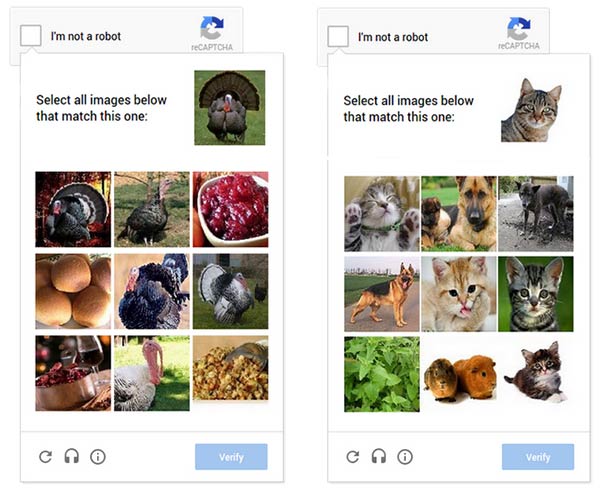Google has announced that it is killing the classic CAPTCHA and replacing it with a new API dubbed 'noCAPTCHA reCAPTCHA', where users simply tick a box to confirm they are human.
First introduced to offer a convenient way of identifying humans among spambots, CAPTCHA, the challenge-response test, has gradually got harder as the bots grew smart enough to solve them. It was discovered that existing AI technology can solve even the most difficult variants of distorted text with a 99.8 per cent accuracy, those that even humans have trouble reading, meaning that the test is no longer very useful.

It could be this simple for you
"For years, we've prompted users to confirm they aren't robots by asking them to read distorted text and type it into a box," reCAPTCHA product manager Vinay Shet wrote in a blog post. "But, we figured it would be easier to just directly ask our users whether or not they are robots."
Google's new security system replaces the ubiquitous distorted texts and phrases with a simple question, "Are you a robot?" This may sound much simpler for robots to defeat, but what makes the system secure and reliable is what Google is doing in the background. The system pre-screens each user's behaviour and filters out those who are easily identifiable as human, meaning that most users will simply see a check box, and all they have to do to pass the test is tick the box. However, for added security, when Google's risk analysis engine can't confidently predict whether a user is a human or an 'abusive agent', the system will provide a more elaborate test.

A more elaborate but 'easy for humans' test
The additional test could ask users to fill in a traditional CAPTCHA, but Google is also experimenting with more mobile-friendly forms of CAPTCHA which requires users to select similar photos, to one provided, from a grid. In addition, data collected through the new method will be used to improve Google's Image Search.
Early adopters of the company's API include Snapchat, Wordpress and the Humble Bundle. Other versions of the new CAPTCHA test are expected to be built on top of the new and more flexible API as the project progresses. For developers interested in offering the new experience, all they need to do is use a new API to implement it in to their products. Google says it's merely three lines of code which is easy to apply if you're already using the older CAPTCHA service. Overall, the new system should result in a lot less deciphering codes for the average web user, and with a bit of luck, less spam too.













